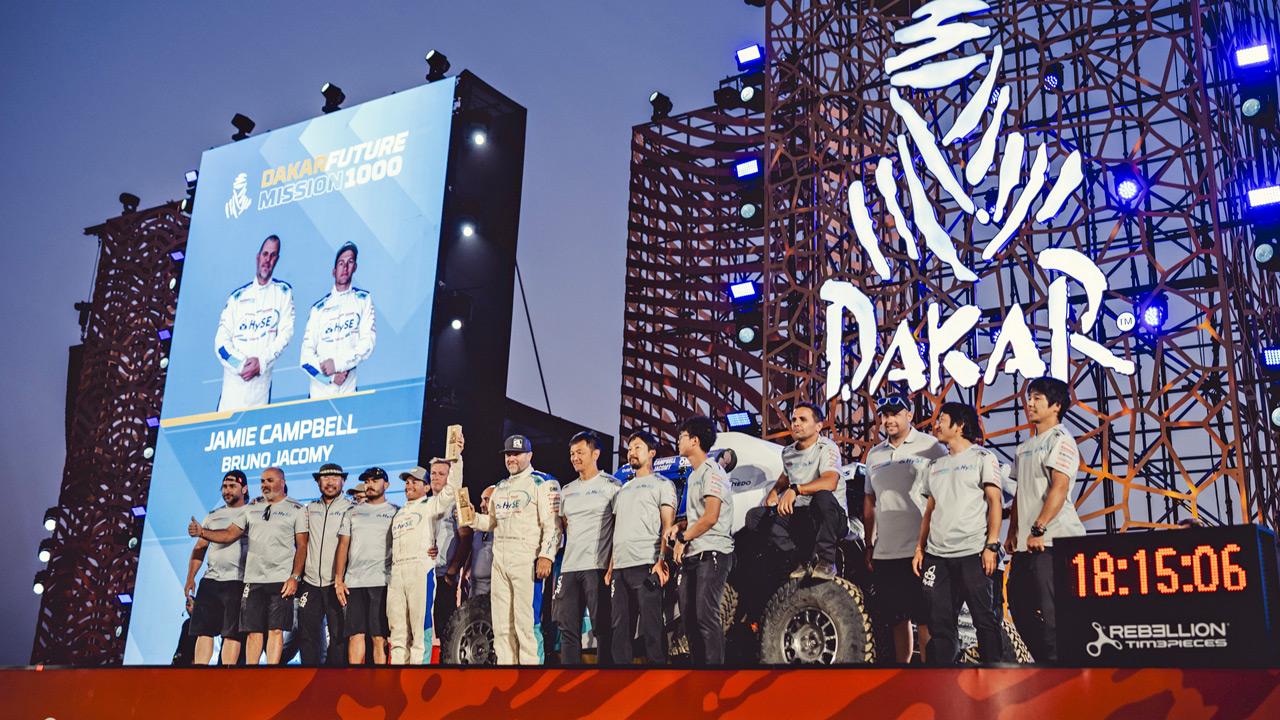
The HySE technical research association, comprising four Japanese motorcycle manufacturers, Kawasaki Heavy Industries, and Toyota, entered a hydrogen-powered vehicle in Dakar 2024. Part 2 ventures into the development genba and behind the scenes at the rally.

HySE (Hydrogen Small mobility & Engine technology) is a technical research association set up by six companies: four motorcycle manufacturers—Kawasaki Motors, Ltd. (Kawasaki Motors), Suzuki Motor Corporation (Suzuki), Honda Motor Co., Ltd. (Honda), and Yamaha Motor Co., Ltd. (Yamaha Motor)—Kawasaki Heavy Industries, Ltd. (Kawasaki Heavy Industries), and Toyota Motor Corporation.
As we saw in Part 1, HySE officially announced its participation in Dakar 2024 in September 2023, just four months out from the rally event.
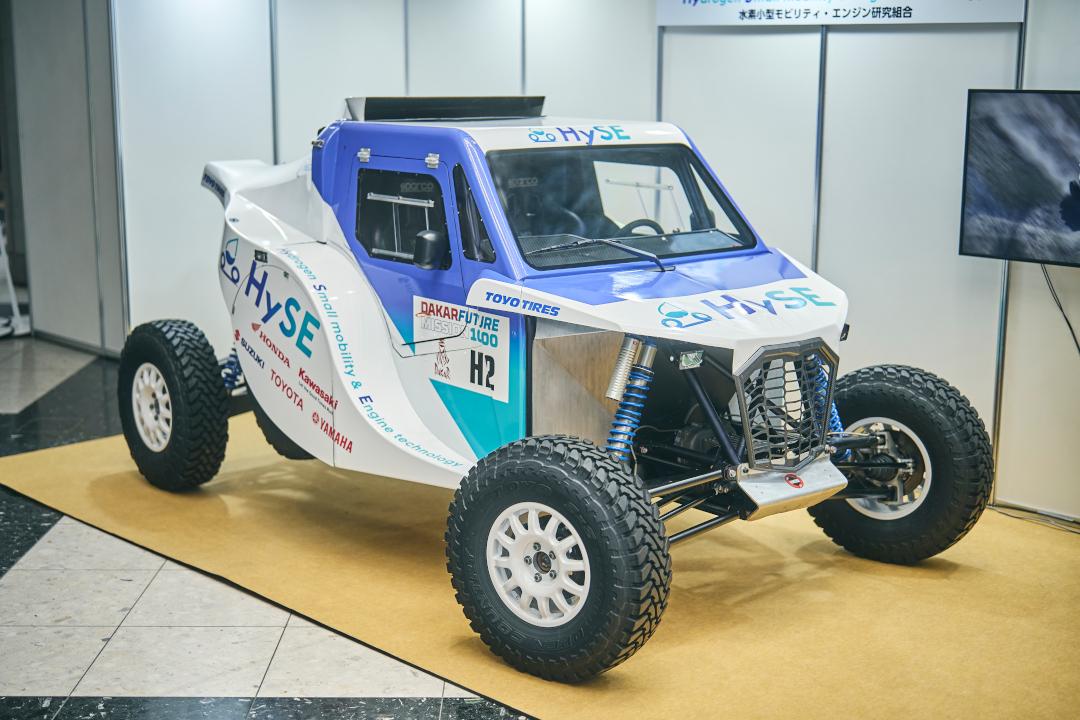
Full-throttle development across three sites
“We started developing the HySE-X1 race vehicle in August. A test run was scheduled in Portugal for November, so we had around three months of development,” explains Keita Nakanishi (Yamaha Motor), who led the Dakar 2024 project.
According to Nakanishi, Kawasaki Motors and Yamaha Motor had already begun researching hydrogen engines. For the Dakar project, the team decided to build upon Kawasaki's 998cc inline four-cylinder supercharged motorcycle engine.
Project Leader Keita Nakanishi
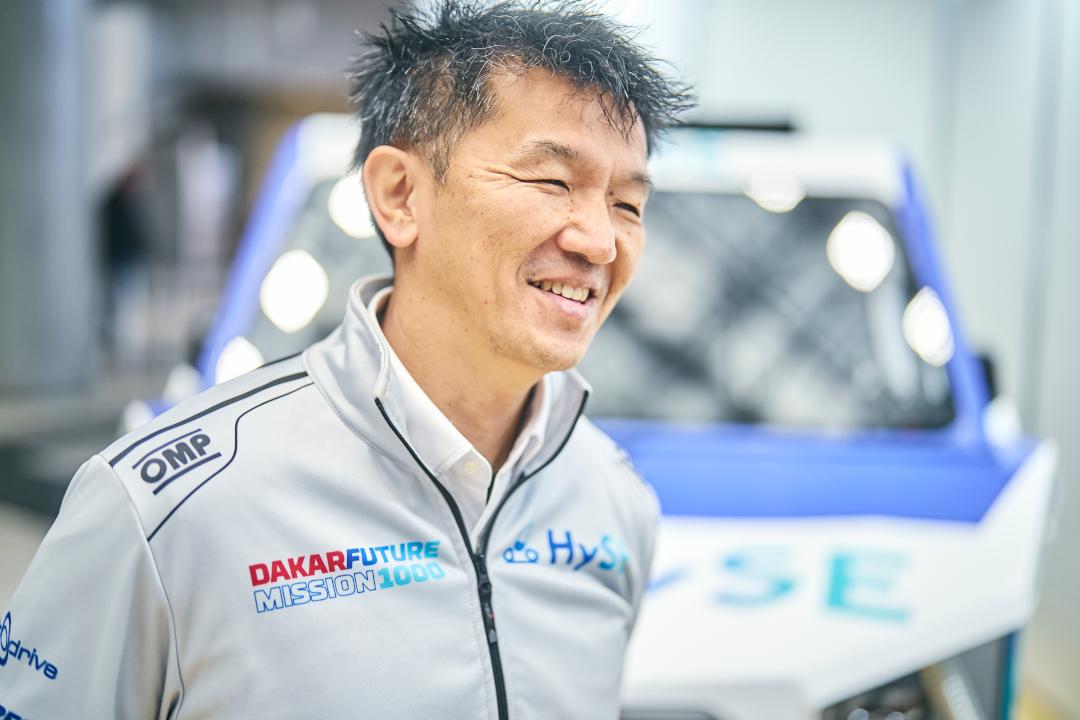
We calibrated the engine at Yamaha Motor headquarters in Iwata. To make that happen, three engineers and mechanics from Kawasaki Motors and Suzuki spent an extended two-month stay at Yamaha Motor.
Meanwhile, the sensors and computer program controls were developed by engineers at Toyota’s head office, tells Assistant Project Leader Masaaki Ichikawa (Toyota BR GT Business Dept.).
Deputy Project Leader Masaaki Ichikawa
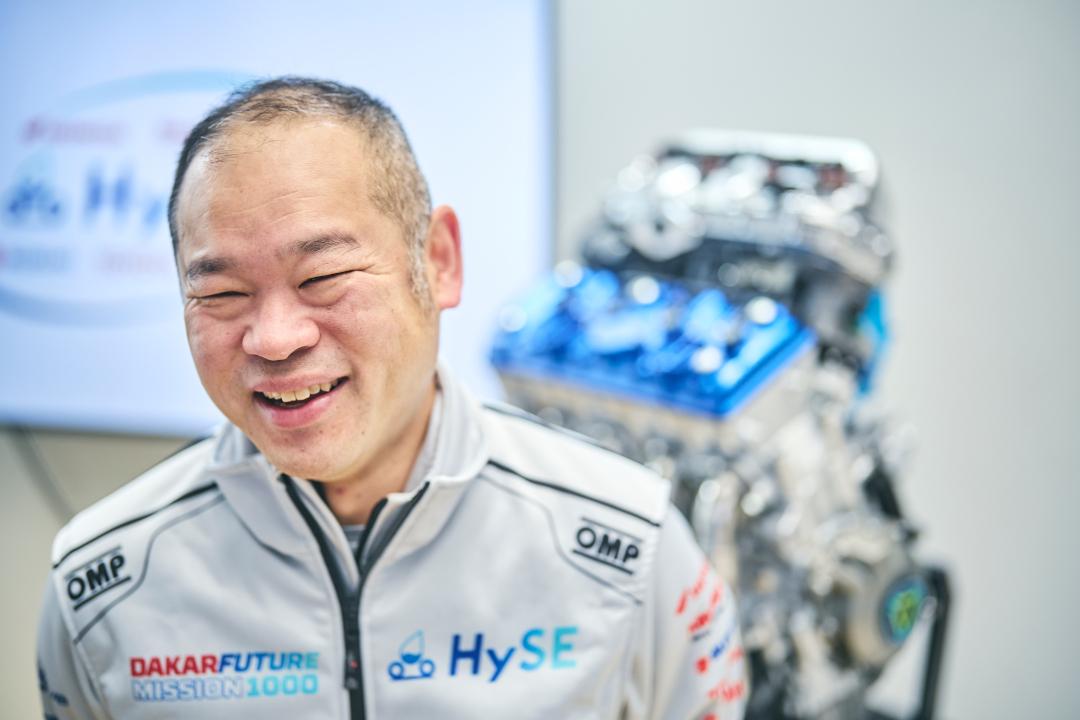
Special regulations exist for using hydrogen safely in racing and rally environments.
Toyota has a hydrogen-powered Corolla competing in Super Taikyu, so we have the necessary control programs.
For example, these include programs to detect and stop hydrogen leaks when a problem occurs.
To rewrite the hydrogen-powered Corolla’s control programs for the HySE-X1, we had three engineers from Kawasaki Motors, Suzuki, and Honda come to Toyota’s head office for an extended period.
The Dakar project is partly about training personnel, which is why the engineers assembled at each development site were young, mostly in their early 30s.
The vehicle chassis, meanwhile, was entrusted to Overdrive Racing, a partner company in Belgium.
Working with the existing chassis frame, they rearranged the layout to allow for installing the fuel tanks and fuel supply systems needed in a hydrogen engine buggy.
In this way, the HySE-X1 was developed at breakneck speed across three sites in Japan and overseas.
On top of the rather demanding schedule, Nakanishi recalls how the project was also beset by unforeseen trouble.
Project Leader Keita Nakanishi
At Yamaha Motor, we usually develop engines for Toyota’s cars, so merely adjusting our test benches to accommodate a motorcycle engine costs us several weeks.
We also had a run of problems in areas not directly related to development, which effectively left us with only about two weeks to calibrate the hydrogen engine.
By late October, we had to send the engine and parts off to Overdrive Racing in Belgium so they could assemble the body.
Difficult days
One of the engineers who spent time in Iwata was Taketo Marubashi (Kawasaki Motors), who had been involved in developing fundamental hydrogen engine technologies since the launch of HySE.
Taketo Marubashi
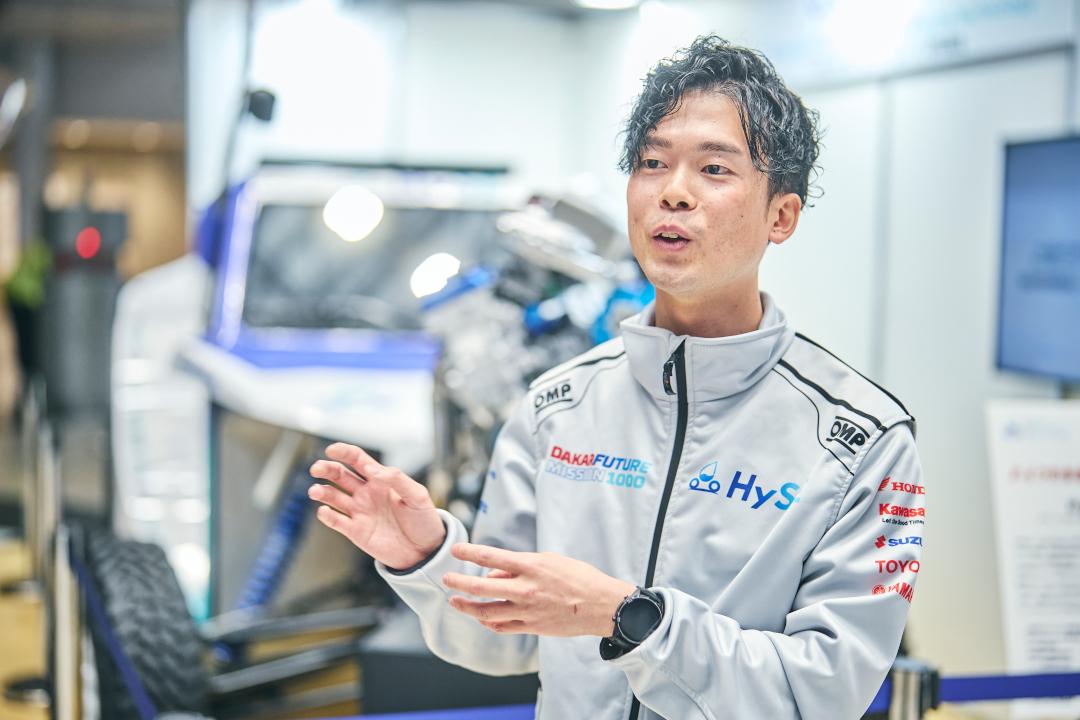
I live in Hyogo Prefecture, so for those two months working at Yamaha Motor, I stayed at a hotel in Iwata.
While calibrating at the bench, we pursued greater output while calibrating the engine’s characteristics to ensure it could run trouble-free even in the punishing Dakar Rally environment.
In the process, the engine neared its limits, and we ran into various abnormal combustion issues.
We calibrated the engine to prevent these by optimizing aspects such as the timing of ignition and hydrogen injection into the cylinder. However, since there are no reference documents or data like those available for gasoline engines, the task proved extremely difficult.
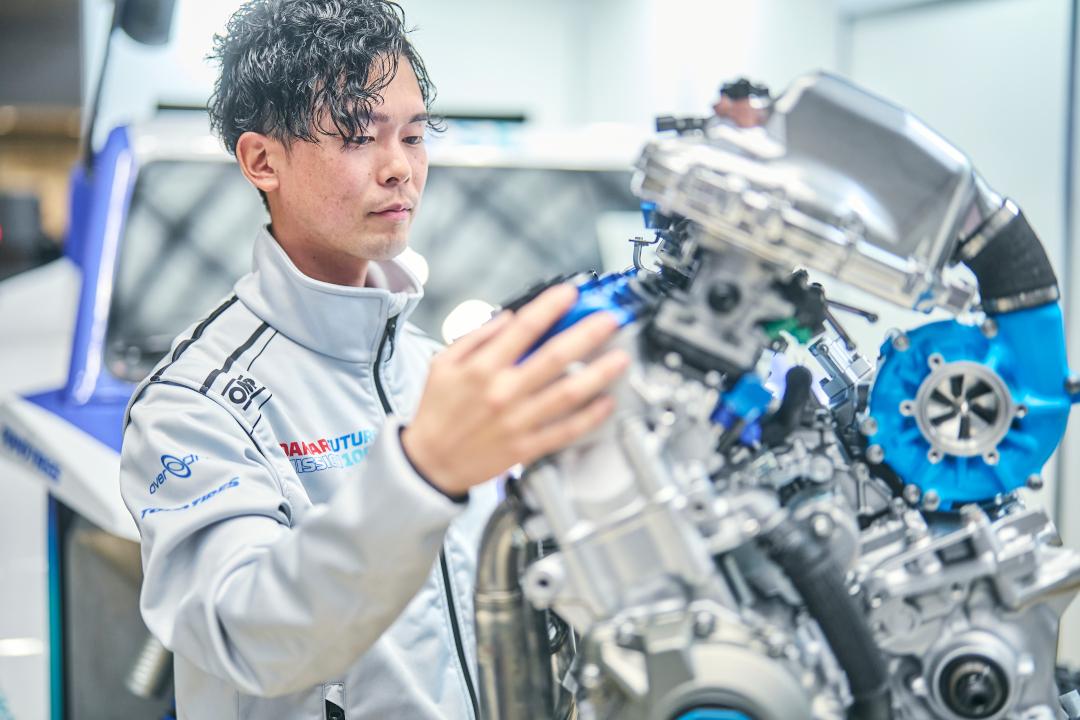
Marubashi and his engine calibration team consulted Toyota personnel well versed in the hydrogen-powered Corolla’s combustion issues. Despite the limited timeframe, they managed to curb the incidence of abnormal combustion—at least in bench testing.
Hiroshi Nishiyama (Suzuki), who joined the project when the Dakar 2024 entry was finalized, also worked on configuring the engine at Yamaha Motor’s test benches.
Hiroshi Nishiyama
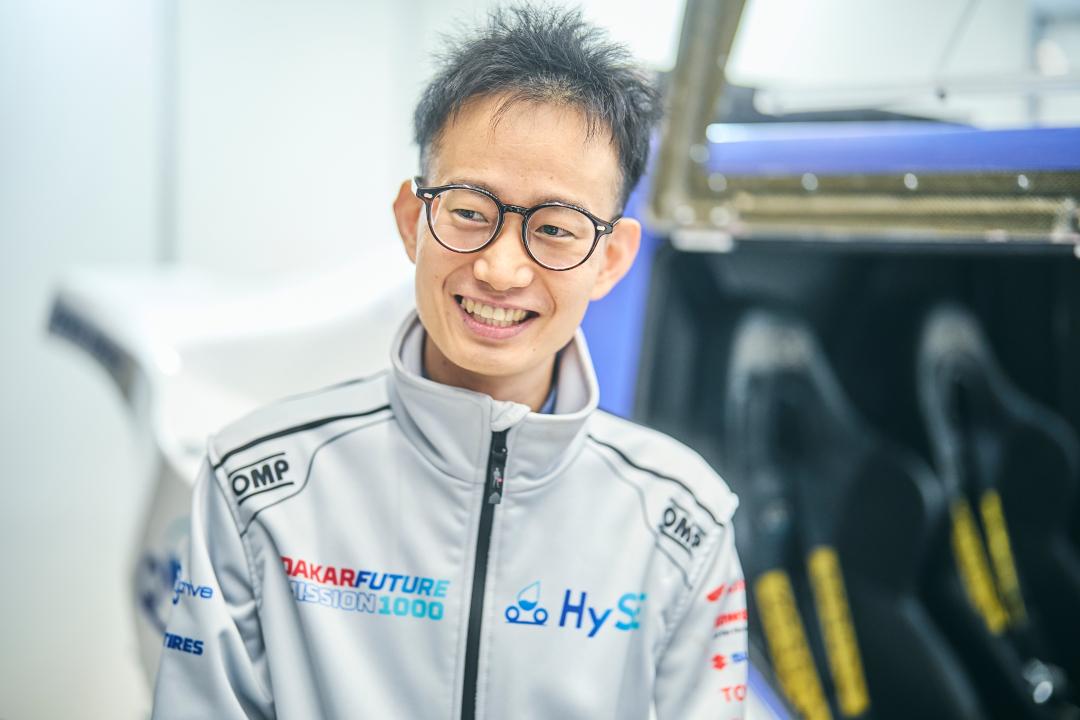
I had always wanted to work in racing, and that led me to join Suzuki, which was competing in MotoGP.
Although it’s not circuit racing, being part of the Dakar project feels like an engineer’s dream come true.
I was responsible for figuring out how the displays would notify our drivers when an engine error occurred, as well as how to control the engine and putting such elements into our programming.
In these areas, I drew on the expertise Toyota had built up through Super Taikyu.
Meanwhile, Daichi Kai (Suzuki) traveled from Hamamatsu to help develop program controls at Toyota’s head office.
Daichi Kai
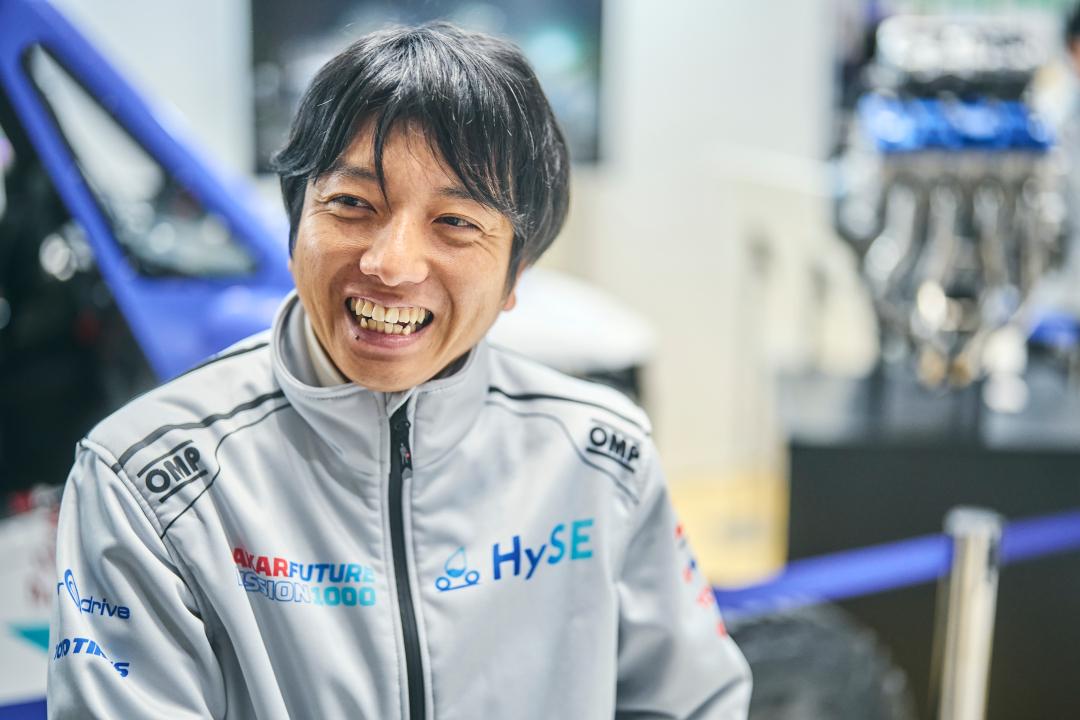
When I first heard about participating in the Dakar Rally, I wrongly assumed we were talking about 2025. That’s how tight the schedule was.
Not only were we short on time, but every day was touch-and-go, either because we lacked data or parts didn’t arrive. Yet this gave me a more aggressive development mindset, such as being proactive in gathering information, and I feel that I’ve grown a bit as an engineer.
Kawasaki Motors, Yamaha Motor, and Toyota had already been researching hydrogen engines, and thanks to that expertise, we somehow managed to get it ready in that short time.
The visiting engineers were welcomed by the control program development team’s leader, Tomohiro Nakano, who works on the hydrogen-powered Corolla as a project manager at the GR Powertrain Development Division.
Project Manager Tomohiro Nakano
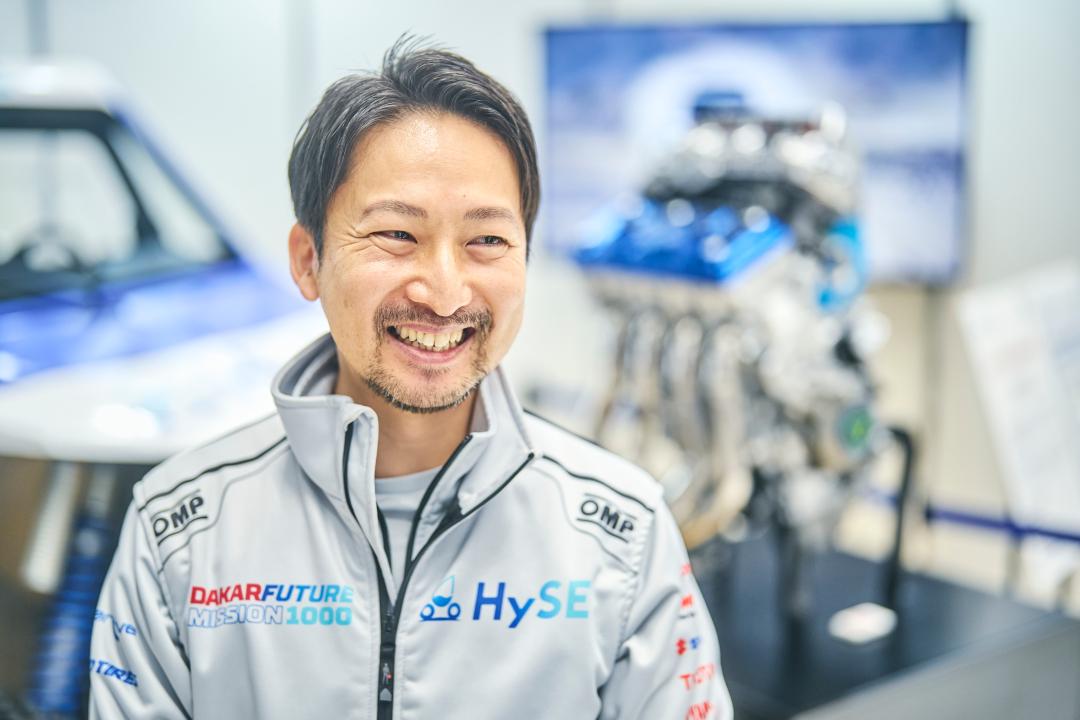
At Toyota, we hope that sharing the knowledge we have gained through the hydrogen engine Corolla with other companies will boost the adoption of such engines.
For this hydrogen engine, we used the base control program and several other components from the Corolla.
Like the engine calibration team, Nakano says that his group encountered various hurdles during development.
To begin with, Toyota had never before hosted another company’s engineers, so it took time to make the necessary arrangements for collaborative development.
They also struggled with parts procurement. With a development period of just two months, the deadline for ordering components had already passed by the time the project got underway.
Project Manager Tomohiro Nakano
We rushed all over the place to procure parts, both inside and outside the company. For instance, we simply couldn’t get our hands on a computer to monitor combustion inside the cylinders, so we asked to borrow one from a GR member who looks after engines for the WEC (FIA World Endurance Championship).
As for working with engineers from different companies, Nakano says things went more smoothly than he expected.
Project Manager Tomohiro Nakano
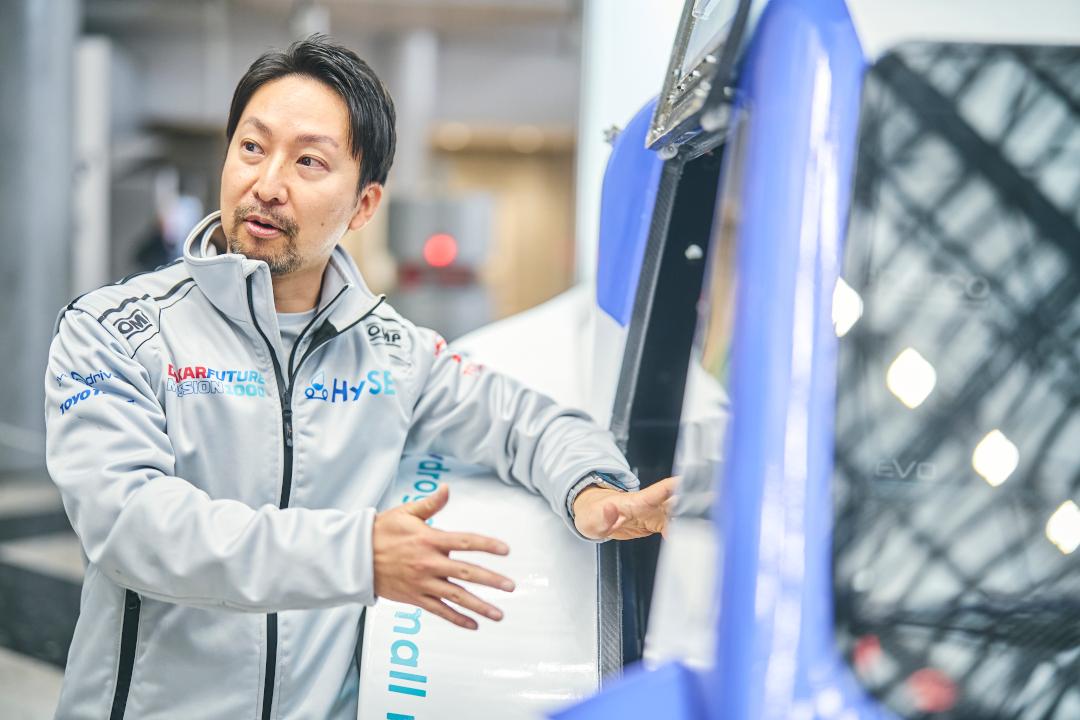
I think it stemmed from our shared ambition to develop hydrogen engine technologies and see them out in the world as soon as possible.
You could certainly sense differences in corporate culture, such as how boldly or cautiously we approached development.
Even so, based on our experience of agile motorsports development with the hydrogen engine Corolla in Super Taikyu, we struck a reasonable balance, tempering a certain degree of boldness with a little caution.
Test drive troubles
Trouble continued to follow the team after they wrapped up development in Japan in late October and reunited in Belgium for assembly at Overdrive Racing.
The biggest problem, according to Assistant Project Leader Ichikawa, was that the hydrogen tanks, electrical systems, and other parts did not arrive.
As it turned out, they had been held up due to revised customs rules.
Deputy Project Leader Masaaki Ichikawa
We were somehow able to assemble the vehicle in early November and confirm that everything worked with a check run at Overdrive Racing’s facilities.
From there, we went to Portugal for testing but it didn’t last long. The chain that transfers the driving force from the engine to the CVT kept breaking. At worst, it would snap after about 200 meters.
Each time that happened, the Overdrive Racing staff made improvements, but on the first day of testing, we ran less than 3 km in total.
The directors even told us that, in the worst-case scenario, we could just do demo runs on the first and last days.
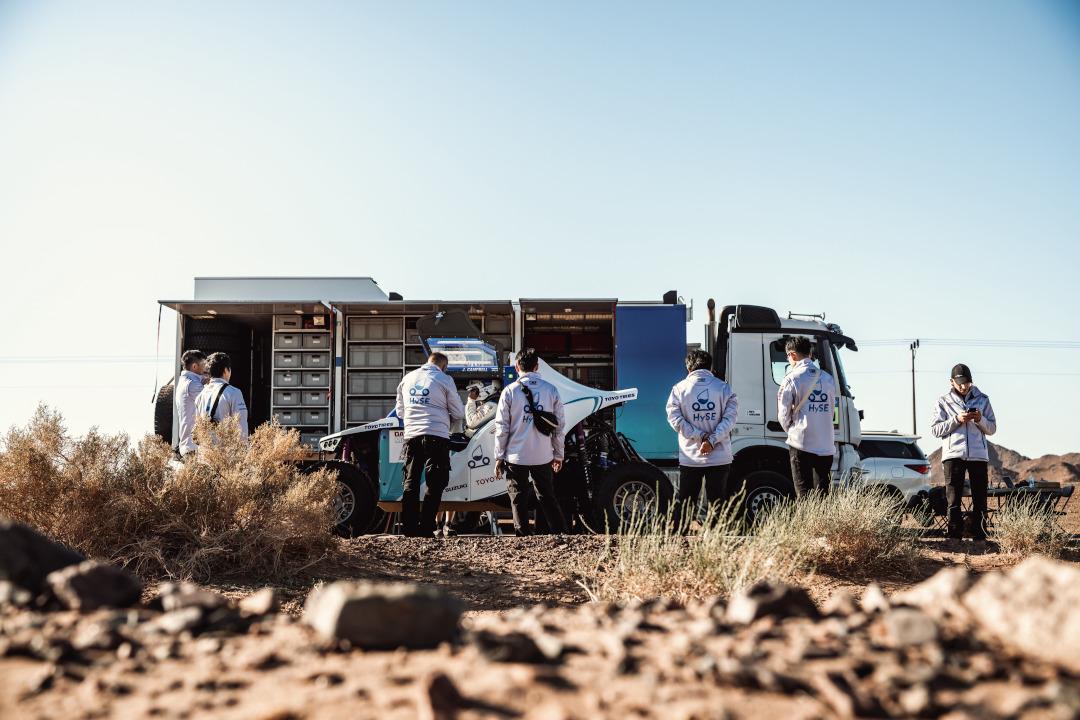
Project Leader Keita Nakanishi
Things began to get going when we reached Dakar in the new year. In the final preliminary test on January 3, the vehicle ran all day without stopping once.
Overdrive Racing had upgraded from the chain to a gear drive, and that had done the trick.
For the first time, I had a genuine sense that we might actually be able to pull this off.
As for the engine, we detected a hydrogen leak only once when the vehicle was assembled, and since we couldn’t do much test driving, no problems arose.
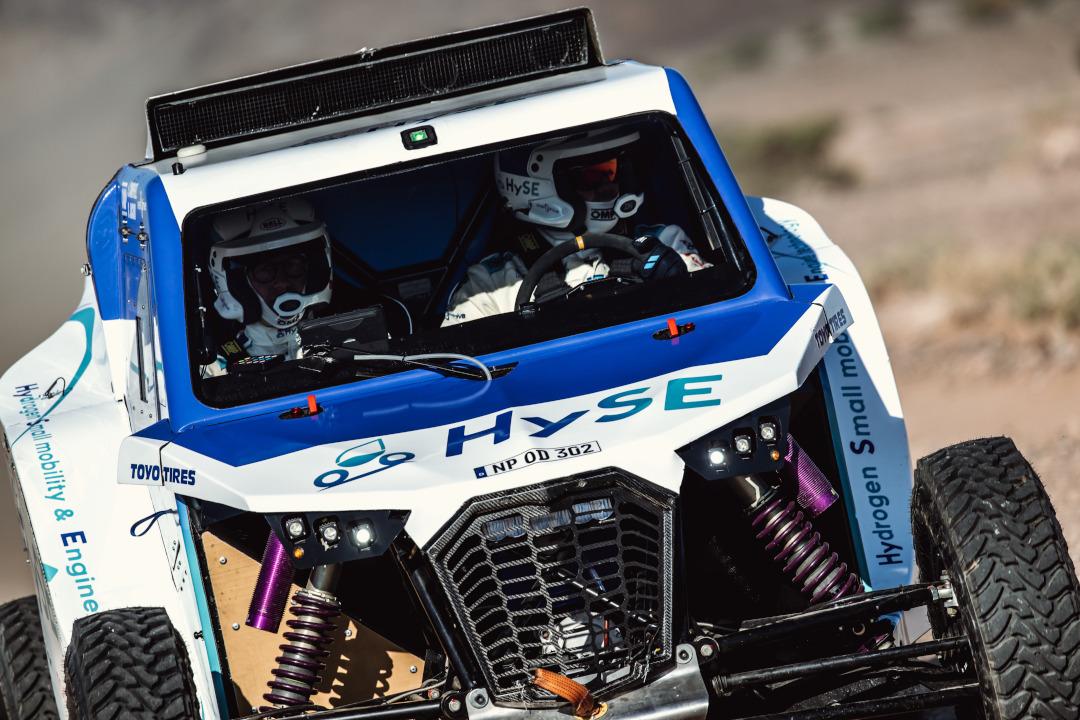
The driver assigned by Honda, as well as the co-driver arranged by Overdrive Racing, headed into the main event with virtually no chance of getting used to the vehicle.
The most brutal day at Dakar
With that, Dakar 2024 kicked off on January 5 in the city of AlUla in north-western Saudi Arabia.
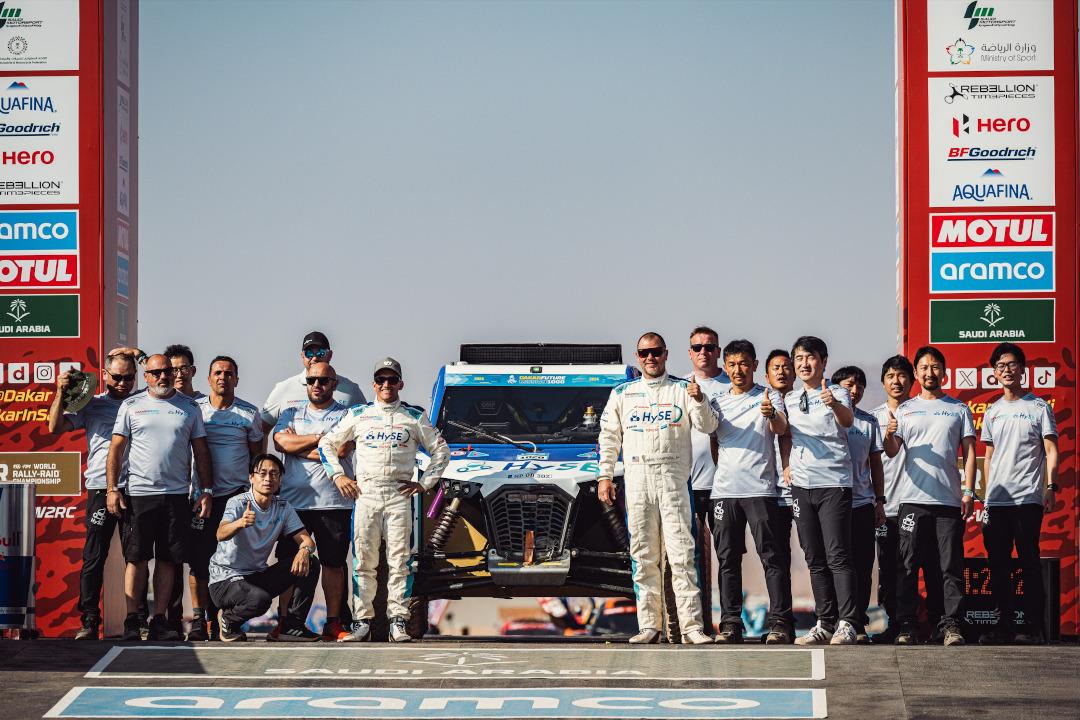
Based on their test runs, Nakanishi and his team estimated a driving range of around 70-80 km on a full tank. Unfortunately, the distance set for Stage 2 on January 7 was 105 km, followed by 108 km for Stage 3 the next day.
With everyone working together, the team analyzed the route and surface conditions, formulating a strategy based on their data analysis results to that point. The driver and co-driver stuck firmly to the plan, getting the buggy safely across the line.
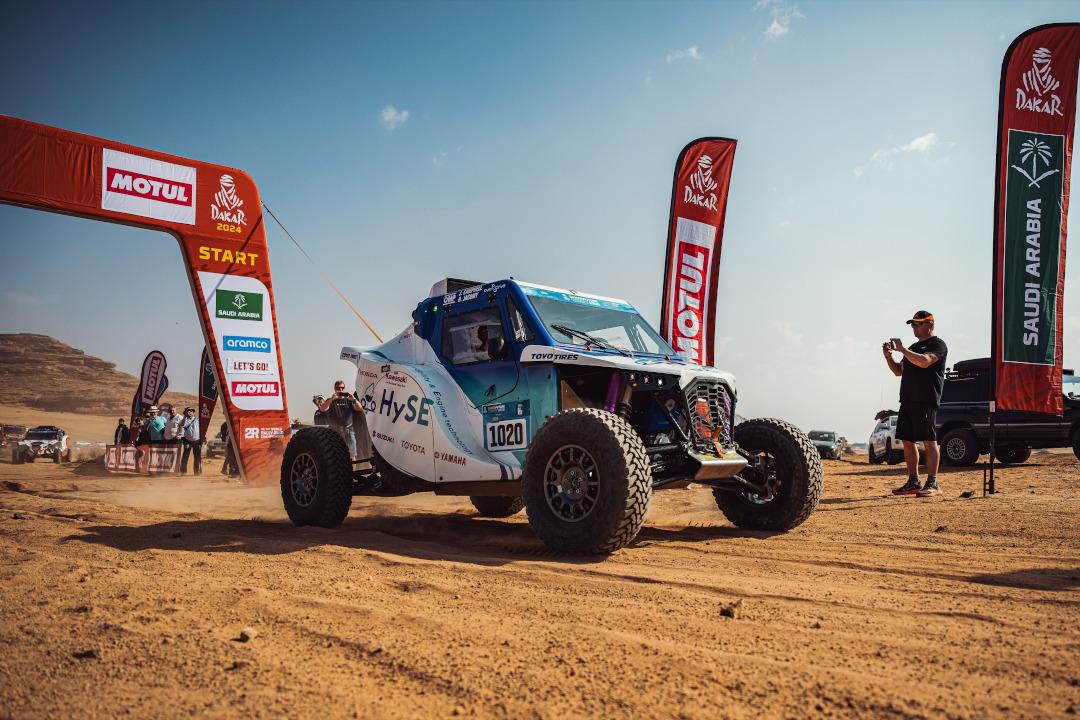
And what about the all-important hydrogen refueling?
Deputy Project Leader Masaaki Ichikawa
The organizers arranged for a mobile hydrogen station made by PRF, a Portuguese company, and two large trailers to travel to each day’s bivouac (campsite) and supply us with hydrogen.
The refueling operation is essentially the same as for the hydrogen-powered Corolla in Super Taikyu.
Besides the HySE-X1, hydrogen was also used by an FCEV (fuel cell electric vehicle) passenger truck and a heavy-duty truck running on a mix of hydrogen and biodiesel fuel.
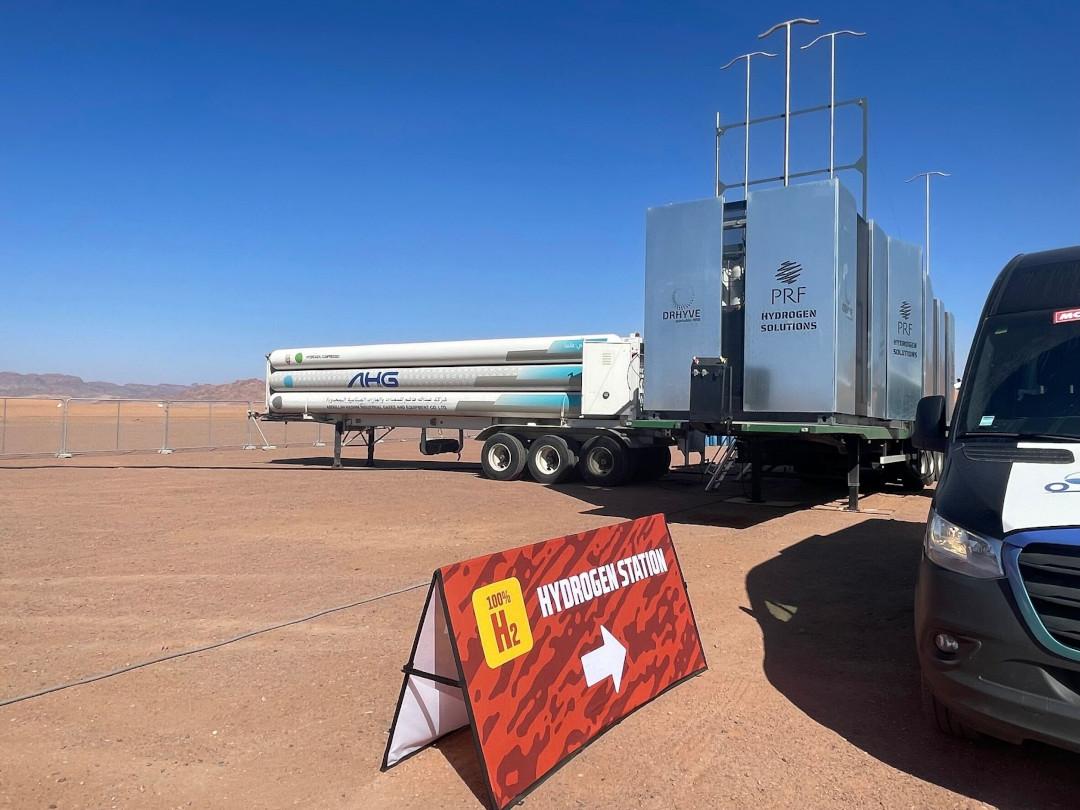
Stage 6 on January 11 proved to be a grueling trial. The day’s 45-km course consisted of nothing but sand dunes, with slopes that could only be conquered at full acceleration and soft sand surfaces that sapped the engine’s power, consuming more fuel. To make matters worse, a problem with the shaft that transmits drive power to the front wheels caused the buggy to get stuck in the sand.
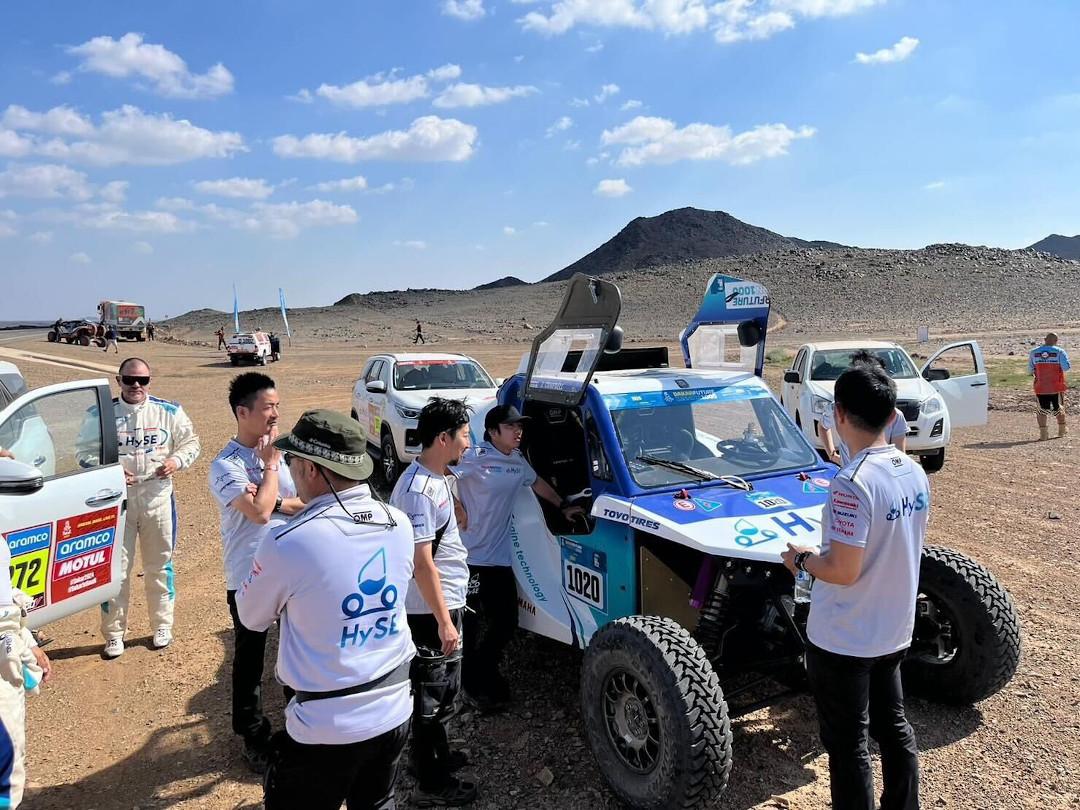
Project Leader Keita Nakanishi
We requested help from a truck, but then that truck ended up rolling.
Desert temperatures exceed 30 degrees during the day but drop to nearly zero at night. In such conditions, we had to wait more than 12 hours for another truck to arrive.
On top of that, we had to travel 900 km to reach the campsite, so we didn’t get there until the next morning. That was our most brutal Dakar experience (laughs).
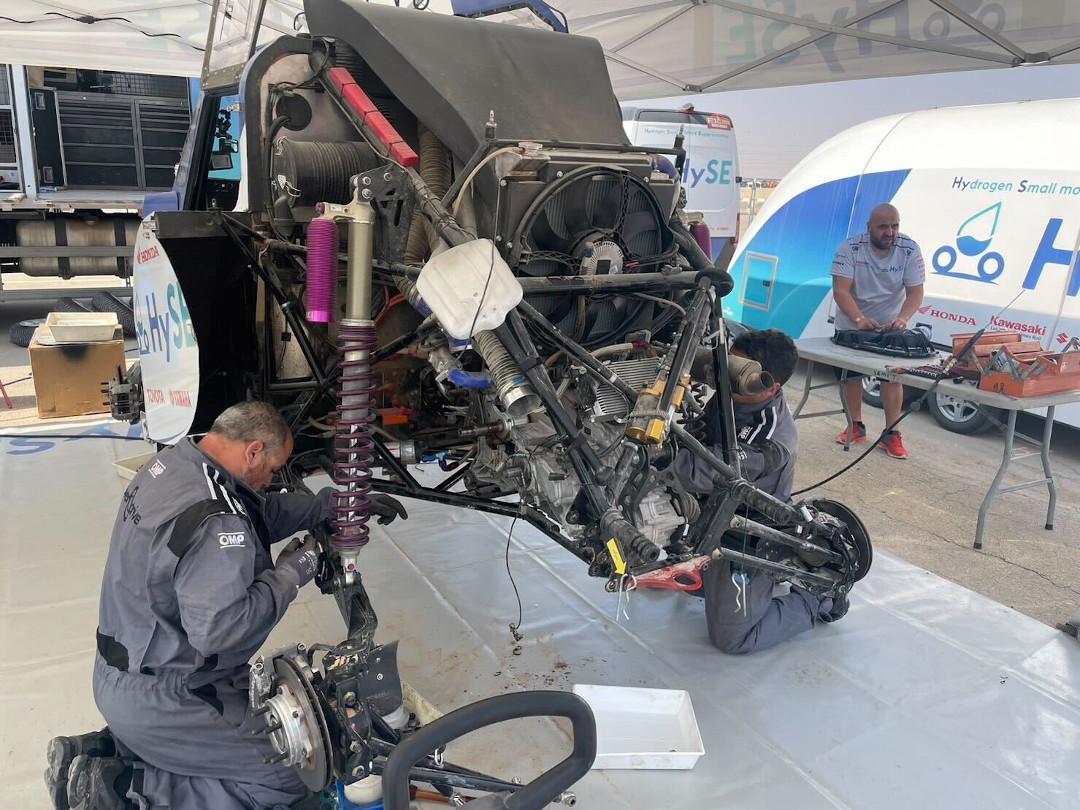
Stage 7 on January 14 was set as the event’s longest, with a distance of 113 km. After going off-course, however, the HySE-X1 ran out of fuel at the 95 km mark.
It also retired from the 94-km Stage 9, where soft sand again affected its drive, denting fuel efficiency.
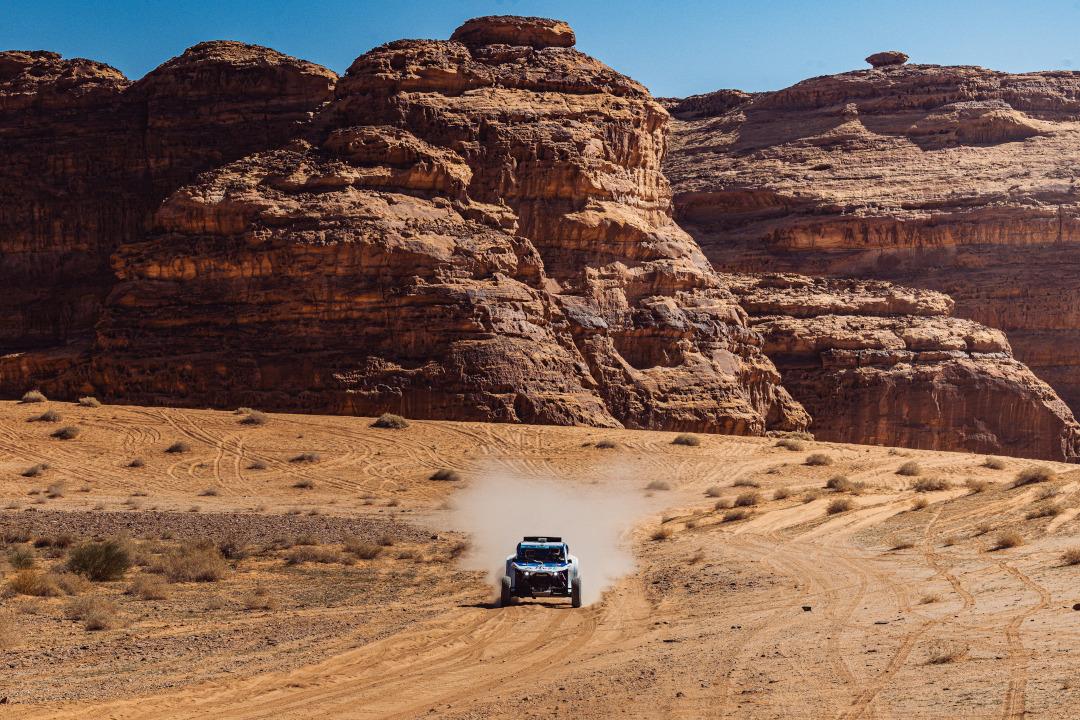
On the other hand, Stage 8 offered a moderate distance and firm road surfaces. Building on their accumulated data and experience, the team went on the attack, completing the 77 km section faster than the target time set by organizers and even earning bonus points in the process.
On January 19, the HySE-X1 safely crossed the final finish line, having covered 830 km, or 90% of the 922 km rally (including the prologue stage).
Under Dakar Rally regulations, any vehicle that covers at least 70% of the set distance is deemed to have completed the event. The HySE-X1 placed an impressive fourth among the ten vehicles participating in Mission 1000.
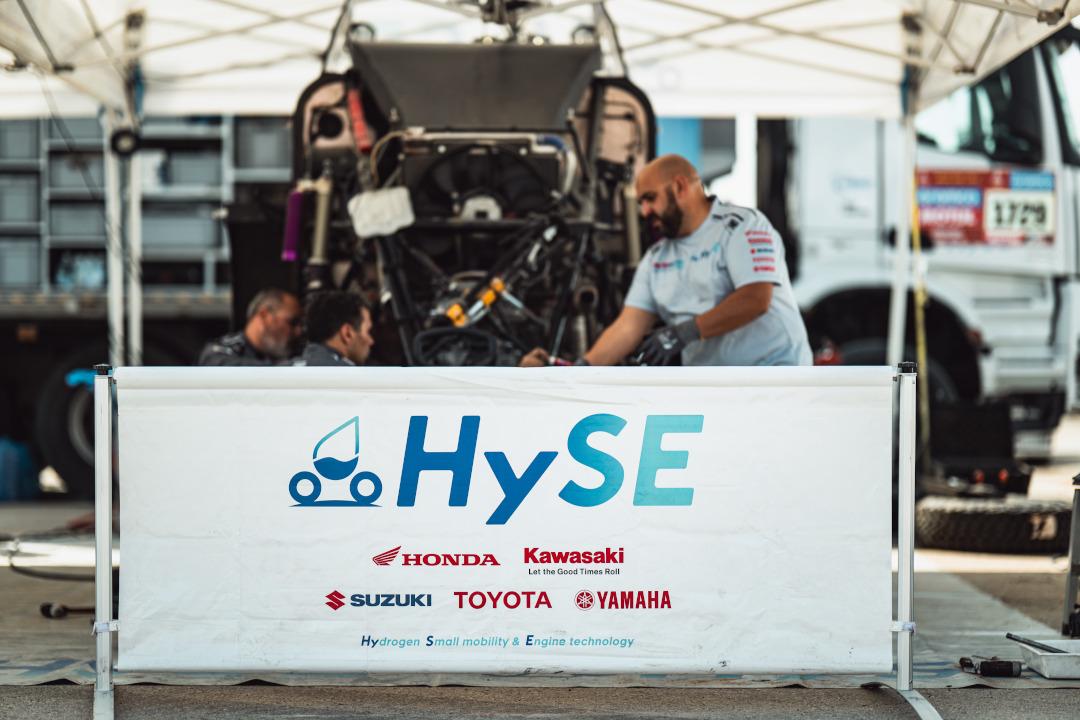
Issues and successes to take into Dakar 2025
What exactly did HySE get out of the Dakar 2024 endeavor?
Deputy Project Leader Masaaki Ichikawa
At higher altitudes, the air becomes thinner. Adjusting how much hydrogen is injected accordingly would help the engine to run under ideal conditions.
This time around, our programming was lacking in this respect, and we want to address that moving forward.
We also detected combustion abnormalities that didn’t occur on the test bench and were able to obtain vast amounts of related data.
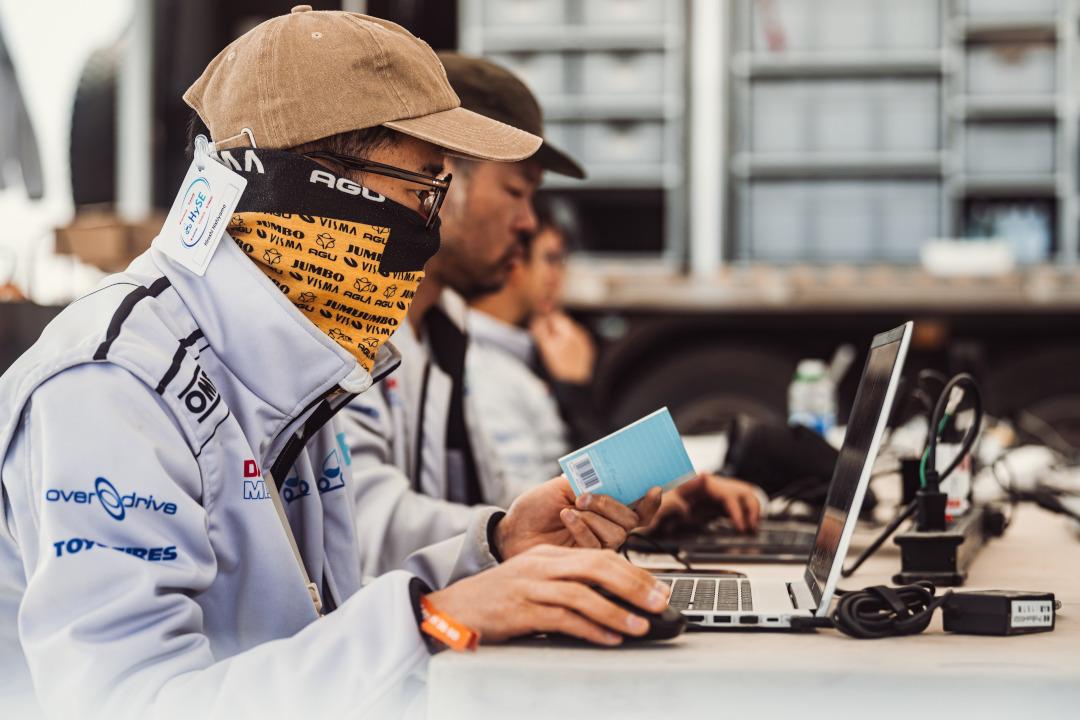
Project Leader Keita Nakanishi
When measuring the exhaust gases, we still get a high concentration of hydrogen. That means the hydrogen isn’t burning completely.
If we are able to make combustion more efficient, we can boost power output and fuel economy without changing the tank capacity.
We’ll focus on that for Dakar 2025, and then, as the next step, we hope to develop a specialized hydrogen engine.
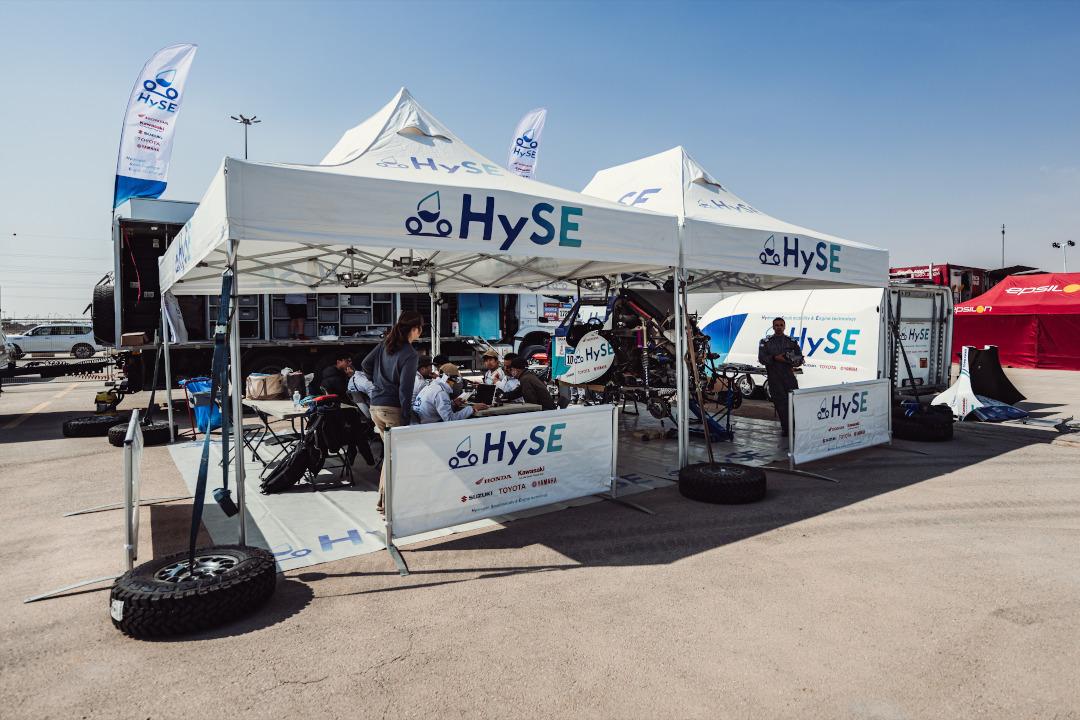
And what did Dakar mean in terms of showcasing the potential of hydrogen engines on the world stage, and getting like-minded companies to join the effort?
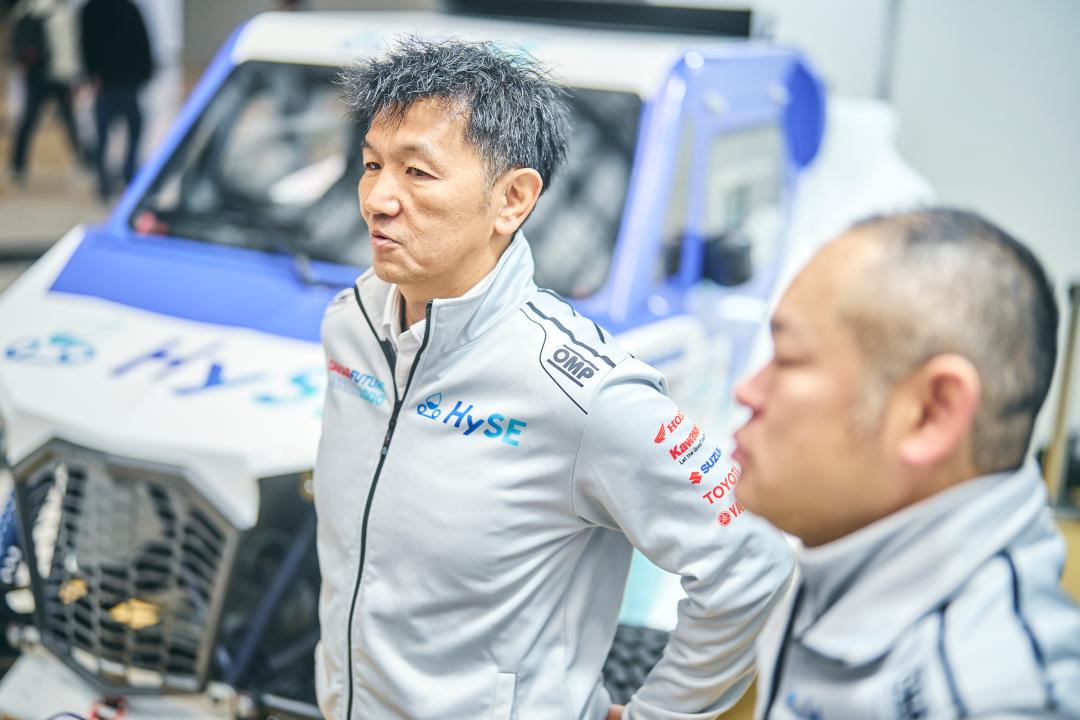
Deputy Project Leader Masaaki Ichikawa
One team asked if we could sell them hydrogen engines.
Organizers from another rally also eagerly invited us to join their event.
President Ben Saluyem of the FIA (Fédération Internationale de l'Automobile) endorsed our project, and the FIA’s technical team provided support when we were building the vehicle.
I definitely sense that our partners are increasing.
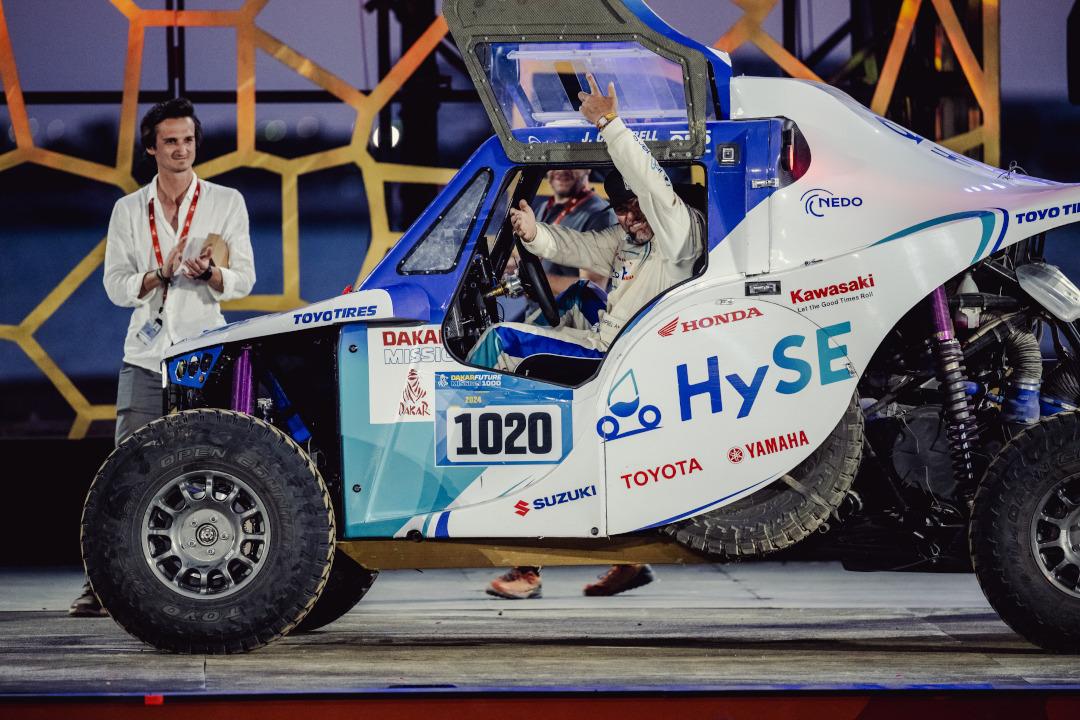
Project Leader Keita Nakanishi
Given that most teams participating in Mission 1000 fielded electric vehicles, including BEVs and FCEVs, the roar of our engine was a real hit with those on the ground.
I remember the crowd going wild when our driver revved the engine during the podium ceremony—vroom, vroom, vroom!
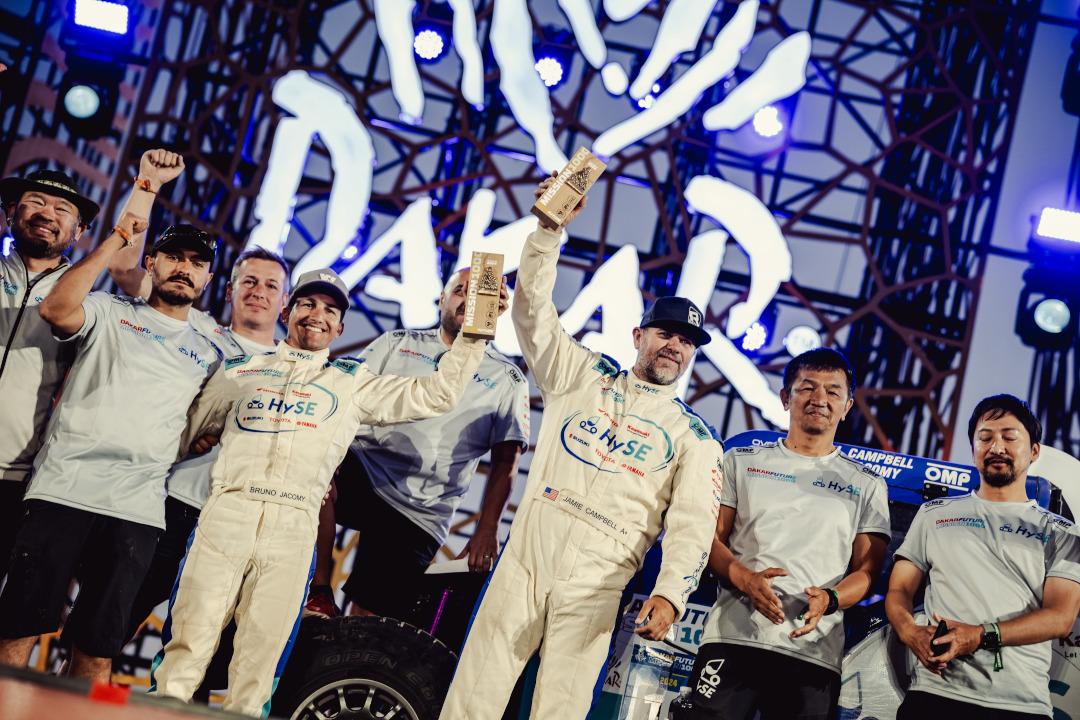
HySE Chairman Kenji Komatsu emphasized that the team will keep taking part in the Dakar Rally as they strive to establish the fundamental technologies for hydrogen engines.
By continuing to highlight the potential of hydrogen engines to the world, he hopes to build excitement around hydrogen energy, including the infrastructure side, in order to attract new partners and investment.
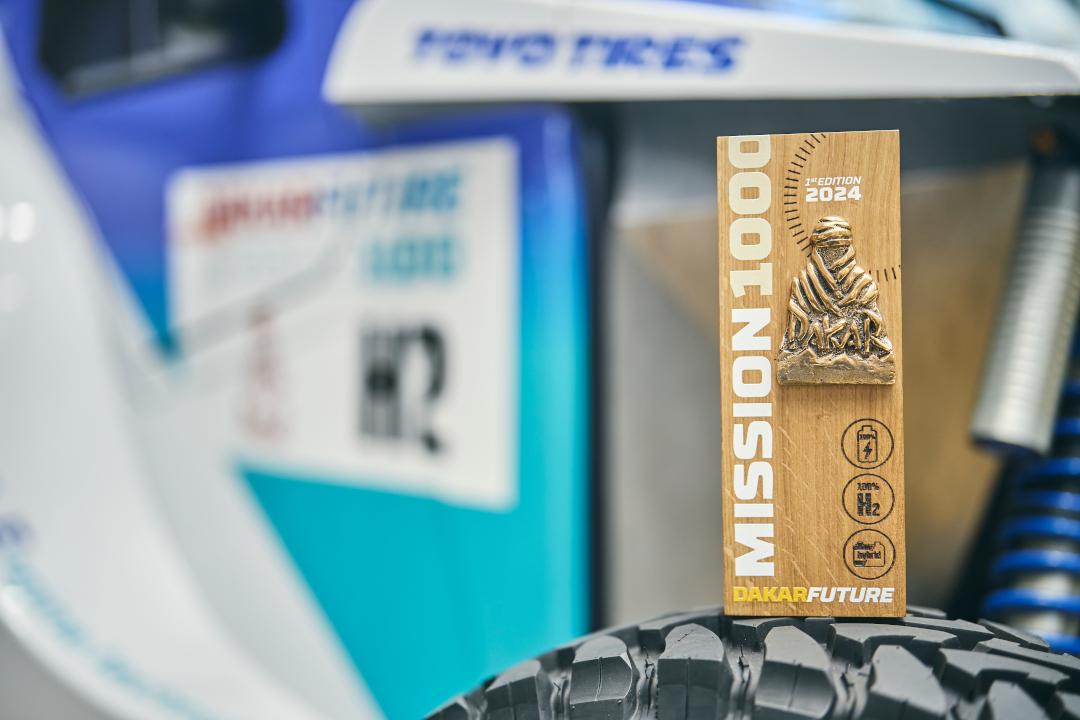
What results will the HySE buggy and its new hydrogen engine deliver at the Dakar Rally in 2025 and beyond? How far will the circle of like-minded partners grow? Toyota Times will be keeping a close eye on the team’s efforts.

